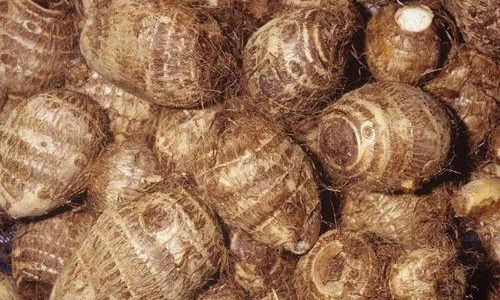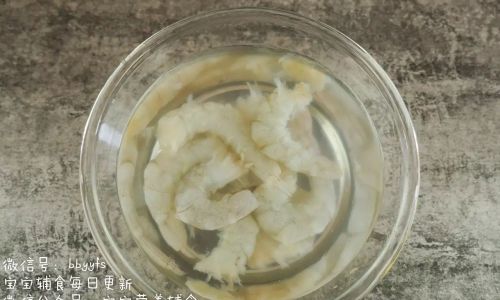Introduction
In the vast realm of culinary delights, fresh baby taro stands out as a unique and versatile ingredient, offering a subtle sweetness and earthy flavor that can elevate any dish. This tuberous root vegetable, native to tropical and subtropical regions, is not only nutritious but also incredibly adaptable to various cooking methods. Whether you’re a seasoned chef or an enthusiastic home cook, mastering the art of preparing fresh baby taro can open up a world of culinary possibilities. This article delves into the intricacies of selecting, preparing, and cooking baby taro to bring out its best qualities, ensuring that every bite is a delightful experience.
Understanding Fresh Baby Taro
Before diving into the recipes, it’s crucial to understand what makes fresh baby taro special. Unlike its larger counterparts, baby taro has a tender texture and a milder taste, making it ideal for a wide range of preparations. Its skin is thin and easy to peel, while the flesh is creamy and slightly sticky when cooked. Nutritionally, baby taro boasts a high fiber content, vitamins, and minerals, making it a healthy addition to any meal.

When selecting fresh baby taro, look for firm, smooth tubers with no signs of softening, discoloration, or mold. The skin should be evenly colored, typically a light brown or beige. Avoid tubers with cracks or blemishes as they may indicate internal damage. Freshness is key; the sooner you can cook your baby taro after purchasing, the better its flavor and texture will be.
Preparing Fresh Baby Taro
Before cooking, proper preparation is essential to ensure safety and enhance flavor. Baby taro contains oxalic acid, which can cause irritation if consumed raw or inadequately cooked. Therefore, always peel and cook it thoroughly.
Peeling the Taro:
- Wear gloves or use a plastic bag to handle the taro, as its sap can cause skin irritation.
- Use a sharp knife to slice off the ends and peel away the skin. Be careful not to cut too deeply into the flesh, as it can become mushy.
- Once peeled, rinse the taro under cold running water to remove any residual sap or dirt.
Cooking Methods:
- Boiling: The simplest and most straightforward method. Place peeled taro pieces in boiling water and cook until tender, about 10-15 minutes depending on size. Test for doneness by piercing with a fork; it should slide in easily.
- Steaming: A healthier option that preserves more nutrients. Place taro pieces in a steamer basket over boiling water and steam until tender, about 15-20 minutes.
- Roasting: Preheat your oven to 400°F (200°C). Toss peeled taro pieces with olive oil, salt, and pepper, then roast on a baking sheet until golden and tender, about 25-30 minutes.
- Frying: For a crispy exterior and creamy interior, slice peeled taro into thin rounds, coat lightly with cornstarch, and fry in hot oil until golden brown. Drain on paper towels to remove excess oil.
Delicious Recipes with Fresh Baby Taro
Now that you know how to prepare fresh baby taro, let’s dive into some mouthwatering recipes that showcase its versatility.
Baby Taro and Coconut Milk Curry

Ingredients:
- 1 lb (450g) fresh baby taro, peeled and cubed
- 1 can (14 oz/400ml) coconut milk
- 1 medium onion, finely chopped
- 2 cloves garlic, minced
- 1-inch piece of fresh ginger, grated
- 1-2 tablespoons curry powder (adjust to taste)
- 1 medium tomato, diced
- Salt and pepper to taste
- Fresh cilantro for garnish
Instructions:
- Heat a little oil in a large pan over medium heat. Add the onion and sauté until translucent.
- Add the garlic and ginger, and cook for another minute until fragrant.
- Stir in the curry powder and cook for 30 seconds, stirring constantly to avoid burning.
- Add the diced tomato and cook until it softens and releases its juices.
- Pour in the coconut milk, stirring to combine. Bring the mixture to a simmer.
- Add the cubed baby taro, season with salt and pepper, and cook until the taro is tender, about 15-20 minutes.
- Taste and adjust seasoning as needed. Serve garnished with fresh cilantro.
Baby Taro and Mushroom Risotto
Ingredients:
- 1 lb (450g) fresh baby taro, peeled and diced
- 1 cup Arborio rice
- 4 cups vegetable broth (plus extra if needed)
- 1/2 cup dry white wine (optional)
- 1 medium onion, finely chopped
- 2 cloves garlic, minced
- 8 oz (225g) mixed mushrooms (such as shiitake, cremini, and button), sliced
- 2 tablespoons olive oil
- Salt and pepper to taste
- Fresh parsley for garnish
- Grated Parmesan cheese (optional)
Instructions:
- Heat the olive oil in a large pan over medium heat. Add the onion and garlic, and sauté until translucent and fragrant.
- Add the sliced mushrooms and cook until they release their juices and begin to brown.
- Stir in the Arborio rice, coating it with the oil and vegetables. If using, pour in the white wine and cook until it’s mostly absorbed.
- Begin adding the vegetable broth, one ladle at a time, stirring frequently. Wait until each ladle of broth is mostly absorbed before adding the next.
- Meanwhile, cook the diced baby taro in a separate pot of boiling water until tender, about 10-15 minutes. Drain and set aside.
- Once the rice is creamy and cooked through (about 18-20 minutes), stir in the cooked baby taro. Season with salt and pepper to taste.
- Serve garnished with fresh parsley and grated Parmesan cheese if desired.
Baby Taro and Sweet Potato Mash
Ingredients:
- 1 lb (450g) fresh baby taro, peeled and cubed
- 1 large sweet potato, peeled and cubed
- 2 tablespoons unsalted butter
- 1/4 cup milk (or plant-based milk for a dairy-free option)
- Salt and pepper to taste
- Fresh nutmeg, grated (optional)
- Fresh parsley for garnish
Instructions:

- Place the cubed baby taro and sweet potato in a large pot of boiling water. Cook until both vegetables are tender, about 15-20 minutes.
- Drain the vegetables and return them to the pot. Add the unsalted butter and milk. Mash with a potato masher or fork until smooth and creamy.
- Season with salt and pepper to taste. If desired, add a pinch of grated nutmeg for an extra layer of flavor.
- Serve warm, garnished with fresh parsley. This mash pairs beautifully with roasted meats, grilled vegetables, or as a side dish for a hearty meal.
Baby Taro and Shrimp Stir-Fry
Ingredients:
- 1 lb (450g) fresh baby taro, peeled and sliced into thin rounds
- 1 lb (450g) medium shrimp, peeled and deveined
- 2 tablespoons vegetable oil
- 3 cloves garlic, minced
- 1-inch piece of fresh ginger, grated
- 1 red bell pepper, sliced into strips
- 3 green onions, sliced
- 3 tablespoons soy sauce
- 1 tablespoon rice vinegar
- 1 tablespoon honey or maple syrup
- 1 teaspoon cornstarch mixed with 2 tablespoons water (for thickening)
- Salt and pepper to taste
- Sesame seeds for garnish
Instructions:
- In a small bowl, whisk together the soy sauce, rice vinegar, honey or maple syrup, and cornstarch slurry. Set aside.
- Heat 1 tablespoon of vegetable oil in a large wok or skillet over medium-high heat. Add the sliced baby taro and stir-fry until lightly browned and tender, about 5-7 minutes. Remove from the wok and set aside.
- In the same wok, add the remaining tablespoon of vegetable oil. Add the minced garlic and grated ginger, and stir-fry for 30 seconds until fragrant.
- Add the shrimp, spreading them out in a single layer. Cook until they turn pink and opaque, about 2-3 minutes per side.
- Return the stir-fried baby taro to the wok, along with the sliced red bell pepper and green onions. Pour in the soy sauce mixture, stirring to combine. Cook until the sauce thickens and everything is heated through.
- Taste and adjust seasoning with salt and pepper as needed. Serve garnished with sesame seeds.
Conclusion
Fresh baby t






0 comments